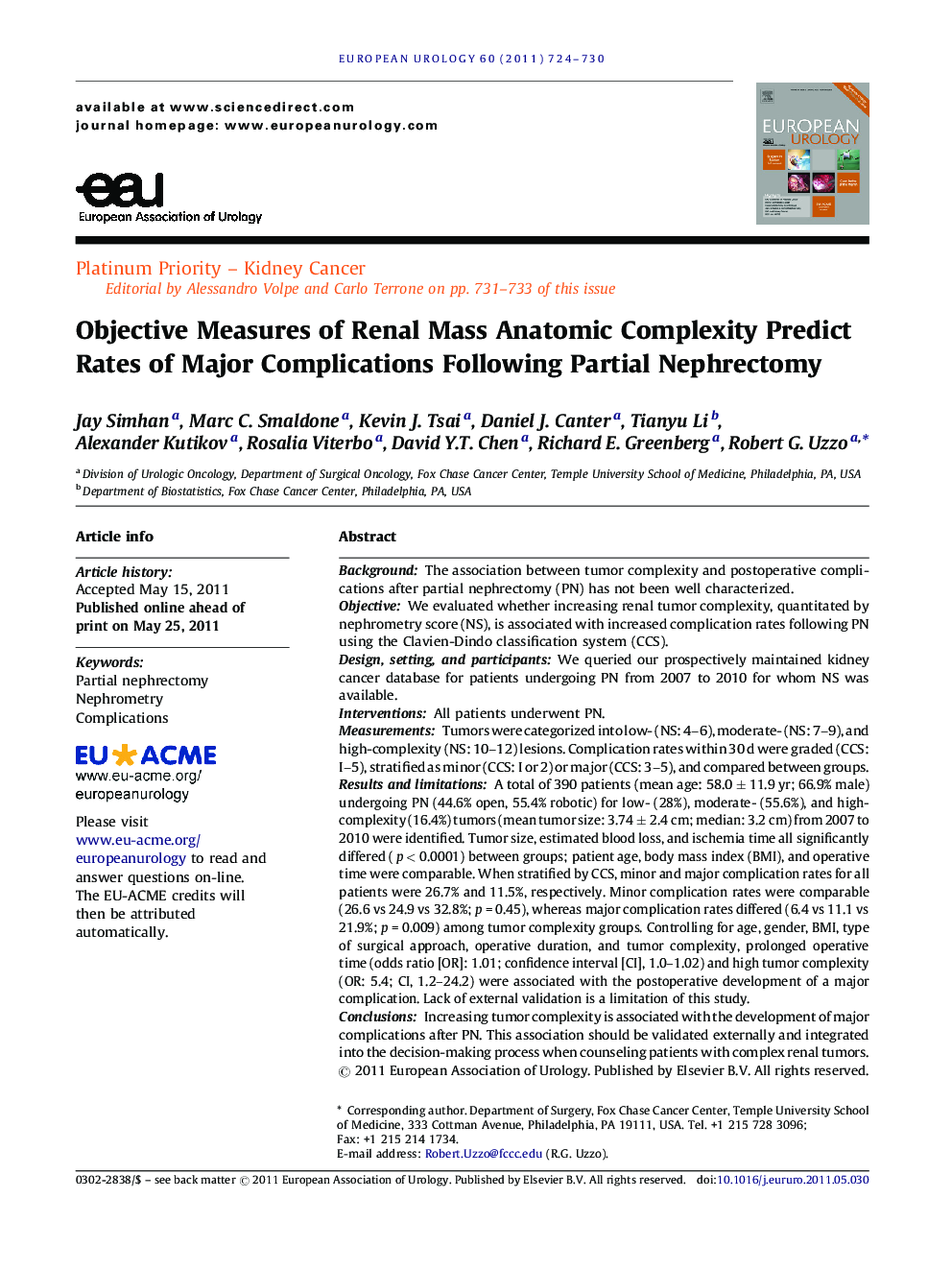| کد مقاله | کد نشریه | سال انتشار | مقاله انگلیسی | نسخه تمام متن |
|---|---|---|---|---|
| 3924263 | 1253098 | 2011 | 7 صفحه PDF | دانلود رایگان |

BackgroundThe association between tumor complexity and postoperative complications after partial nephrectomy (PN) has not been well characterized.ObjectiveWe evaluated whether increasing renal tumor complexity, quantitated by nephrometry score (NS), is associated with increased complication rates following PN using the Clavien-Dindo classification system (CCS).Design, setting, and participantsWe queried our prospectively maintained kidney cancer database for patients undergoing PN from 2007 to 2010 for whom NS was available.InterventionsAll patients underwent PN.MeasurementsTumors were categorized into low- (NS: 4–6), moderate- (NS: 7–9), and high-complexity (NS: 10–12) lesions. Complication rates within 30 d were graded (CCS: I–5), stratified as minor (CCS: I or 2) or major (CCS: 3–5), and compared between groups.Results and limitationsA total of 390 patients (mean age: 58.0 ± 11.9 yr; 66.9% male) undergoing PN (44.6% open, 55.4% robotic) for low- (28%), moderate- (55.6%), and high-complexity (16.4%) tumors (mean tumor size: 3.74 ± 2.4 cm; median: 3.2 cm) from 2007 to 2010 were identified. Tumor size, estimated blood loss, and ischemia time all significantly differed (p < 0.0001) between groups; patient age, body mass index (BMI), and operative time were comparable. When stratified by CCS, minor and major complication rates for all patients were 26.7% and 11.5%, respectively. Minor complication rates were comparable (26.6 vs 24.9 vs 32.8%; p = 0.45), whereas major complication rates differed (6.4 vs 11.1 vs 21.9%; p = 0.009) among tumor complexity groups. Controlling for age, gender, BMI, type of surgical approach, operative duration, and tumor complexity, prolonged operative time (odds ratio [OR]: 1.01; confidence interval [CI], 1.0–1.02) and high tumor complexity (OR: 5.4; CI, 1.2–24.2) were associated with the postoperative development of a major complication. Lack of external validation is a limitation of this study.ConclusionsIncreasing tumor complexity is associated with the development of major complications after PN. This association should be validated externally and integrated into the decision-making process when counseling patients with complex renal tumors.
Journal: European Urology - Volume 60, Issue 4, October 2011, Pages 724–730